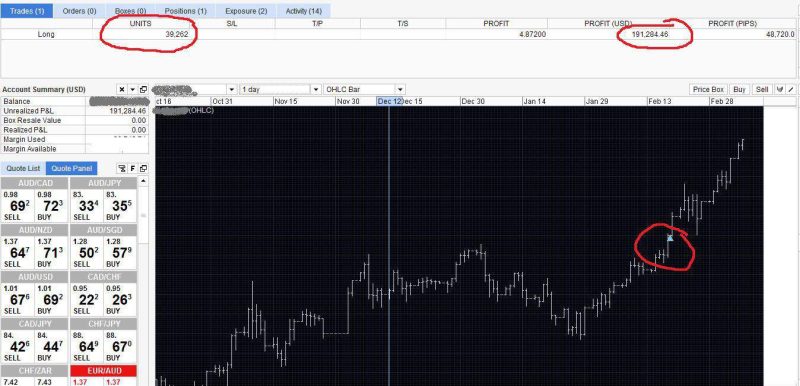
Also Read: Is Cryptocurrency a Good Investment?
Contents
- Introduction to Crypto Winter
- How to Confirm a Crypto Winter?
- Ways to Survive in a Crypto Winter
- Bottom Line
- FAQs
Introduction to Crypto Winter
The fluctuations in the crypto market have kept even the most experienced traders on their toes. The reoccurrence of the bull and bear market makes traders go in the same direction each time, only be swept off in a different direction.

Crypto winter might have begun in the last two months of 2021 as the crypto market experienced a drop in the price of the cryptocurrency. This winter sprang fear in some industries that are tied to the crypto market.
The crypto cycle is currently unpredictable and its pattern cannot be studied as a fall in crypto assets price leads to a time of flat trading.
Back in 2018, the crypto industry witnessed a downturn in the crypto market; this downturn can be called a crypto winter. Bitcoin got to an all-time high of $20,000 then fell under $5,000.
The best part of this crypto winter is the bull that follows. These sharp rallies that occur bring more investors and corporate enterprises into the crypto markets.
The current winter the crypto market is experiencing started in November. The market cap of all digital assets in these financial markets was nearly $3 trillion but it began to slump.
The market value is currently around $1.6 trillion; bitcoin has fallen from $69,000 of late last year to around $36,000 this year.
Speculative investors and corporate enterprises that are invested in the crypto market would have experienced some sort of market downturn in their investments. They are encouraged to take a recess for re-strategizing and evaluation of their investment.
This will prevent them from jumping on every price or opportunity that presents itself. They will be more conscious and upright; evaluating every dip before investing.
How to Confirm a Crypto Winter?
Since the 2018 crypto winter did not show any form of recovery until 2019, it might be difficult to confirm if the market is going into winter or not.
Things are a lot different now but it hasn’t changed the rumours that there might be another crypto winter. To confirm if those rumours are true or not check out the tips below.
Mythical four-year crypto cycle
There's a widespread perception that the cryptocurrency (digital assets) market (in recent years) follows a four-year cycle of ups and downs in cryptocurrency prices. It's impossible to say if this is the outcome of a self-fulfilling prophesy or not.
Yet, many people link this hypothesis to the time of Bitcoin halving events, which happen every four years (more specifically, every 210,000 blocks). According to legend, this alters the market's dynamic and ushers in a new market cycle.
The quantity of freshly minted bitcoins distributed to successful miners as block rewards are lowered in half at each Bitcoin halving event – the block reward was cut in half from 12.5 to 6.25 in the most recent halving event in 2020.
What's most remarkable about these occurrences is the recurring influence they appear to have on the crypto market roughly a year after each halving.
Bitcoin and several other cryptocurrencies in the market recorded new all-time highs a year after the 2016 halving, when bitcoin block rewards were lowered from 25 to 12.5 BTC. Bitcoin and the larger crypto market reached fresh all-time highs in 2021, one year after the next successive halving.
Because of the four-year gap between these two peaks, some investors are concerned that a similar gap will exist for crypto winters. And, given that 2018 was the previous winter, a second is expected this year — providing that cycles keep following the same four-year cycle.
Check the cycle of the crypto market
Necessarily reflect on the history of the crypto market and compare the slumps that have been happening. This way you might be able to determine if there is going to be another crypto winter. The 2018 crypto winter came to the industry after the bitcoin reached an all-time high of $19,850 in December 2017.
The current slump or dip the market is experiencing might go on for a long time and we can use this analysis to determine if there would be another crypto winter. Since the current dip, bitcoin has declined as much as 52% from its all-time high.
Aside from bitcoin, the overall cryptocurrency market has fallen by 66%. This is fall will have a great effect on the investments of corporate organizations in the industry.
Aggravating macroeconomics factors
Undoubtedly, much has changed since 2018, not just in the cryptocurrency market but also in the global economy as a whole. The first global pandemic crisis since 1918 has rattled stock markets throughout the world, the Federal Reserve is set to increase interest rates for the first time in three years, and inflation in many nations has reached levels not seen in decades.
Furthermore, the overall government debt of the United States has doubled in the last decade, reaching $28 trillion.
Authorities throughout the world, who have mostly ignored cryptocurrencies for the majority of the industry's 13-year history, are now working quickly to comply with new rules and legislation.
These events will likely put a stop to the rash of crypto investments we've seen from institutional and retail investors over the last year, as borrowing becomes more expensive and hence less appealing as the cost of living rises. As a result, a colder temperature might be created, allowing the crypto market to enter another winter.
Also Read: What Is Crypto Scalping?
Ways to Survive in a Crypto Winter
With the unexpected slumps that graze the crypto market, we must find ways to thrive and retain market value. Here are ways you can do so:

Self Investment
Investing in oneself by learning a new skill is one of the most personally rewarding things an investor can do during a depressed market. Not only will these help investors resist the temptation to sell and miss out on future profits, but they may also open up new opportunities for wealth accumulation.
Notwithstanding the market collapse, cryptocurrencies continue to make progress toward broad use, and the number of employees in the blockchain sector will only grow in the future.
Be it studying Solidity programming, experimenting with graphic and digital design to develop a new line of NFTs, or simply conducting research to obtain a better grasp of the many business sectors.
Staking
Staking is likely the easiest approach to boost the long-term value of a portfolio, and it relieves the stress of agonising about daily price swings because the staked asset continues to accumulate tokens. Most layer-1 protocols, such as Solana (SOL), Cardano (ADA), Polygon (MATIC), and Avalanche, allow users to wager their native token on the network to receive a return (AVAX).
Ethereum owners can also stake their tokens on the Eth2 beacon chain, although staking incentives will not be available until the Eth2 platform is fully operational. There are many additional staking choices available, ranging from game protocols like Axie Infinity and Illuvium to NFT markets like LooksRare. So staking becomes a question of placing it and ignoring it once a deep dive has been completed and fundamentally good projects have been selected.
Highly volatile altcoins need to be avoided
When a broad market slump hits, the first thing to do is reassess current holdings and minimize access to the riskiest assets.
Although a lot of the token holders seem to be new to the process and not long-term shareholders like the customer bases for further established projects, these are frequently new projects that have emerged from trending sectors of the crypto market such as meme coins, nfts, or rebase projects like wonderland (time).
Looking at a project's GitHub account to assess the degree of engagement and the number of engineers working to developing out the protocol is a good place to start the assessment.
If despite dazzling marketing ploys and large pledges, there is little progress, the project could be one that an investor should abandon whenever the market loses steam or a bear market happens.
Traders may then invest these monies in stable coins, which could be staked to earn a return or used to purchase future market drops.
Projects related to perks and ecosystems would be great
The project aims to provide token holders with a means for earning cash via staking, liquidity stake, lending or airdrops that can also be considered if prices are bearish. Staking is the most basic of these as token numbers increase over time. other options include token launchpads, NFT markets and protocols able to provide airdrops to community members.
In this way, early adopters are rewarded for their efforts as they are linked to a network of Cosmo's (ATOM).
Dollar-cost Average
Dollar-Cost Averages (DCA) are processed by a company that buys assets in tranches over a period to rebalance price payments and account for volatility. While the DCA strategy is an effective means of growing the exposure to fundamental sound projects over time, it is typically more effective waiting until after the dust settles and the consolidation begins.
The focus should be on active development projects, an engaged community and a roadmap describing how the project could grow and remain profitable.
Bottom Line
The bottom line is that it is critical to recognize the distinctions between sell-offs, collapses, and crypto winters. While news headlines tend to exaggerate the severity of crypto market fluctuations, the vast majority of corrections are simple sell-offs (a decline in the price of approximately 5 per cent -20 per cent).
Crashes are defined as drops of 20% to 50%, whereas crypto winters (based on historical experience) are defined as drops of 80% or more over 10 to 12 months.
FAQs
What is crypto winter?
This decrease is correlated by the reduction in interest rates for investments in these coins called “cryptic winter”. Crypto has dropped since November after it reached its highest ever price.
When was the last crypto winter?
Despite the bitcoin crisis Bitcoin has remained unaffected by recent reports that cryptos will remain weak in the future and may have triggered more volatility. The previous instance happened at the end of 2017. Bitcoin plunged by 81 per cent to soaring levels of around $1000 – nearly double.
Why is crypto going down?
Bitcoin has dropped almost 2% to $68,990 from its high of 689 days ago thanks to a combination of economic instability and political tensions. It would be that we have entered a bear market or a market downturn.
How long does crypto winter last?
Crashes are usually characterized by 20%-50% declines while crypto winters (going back in history) are typically 80%+ declines over 3-5 months.
















